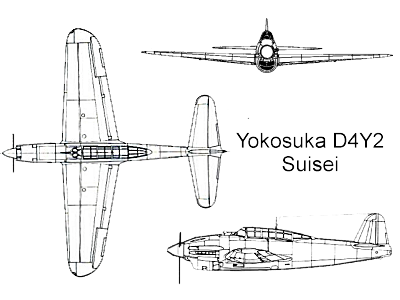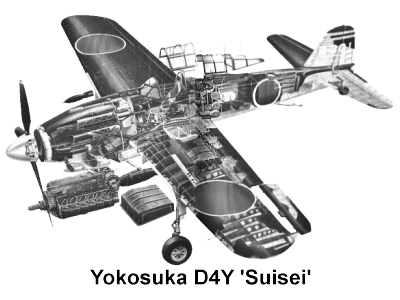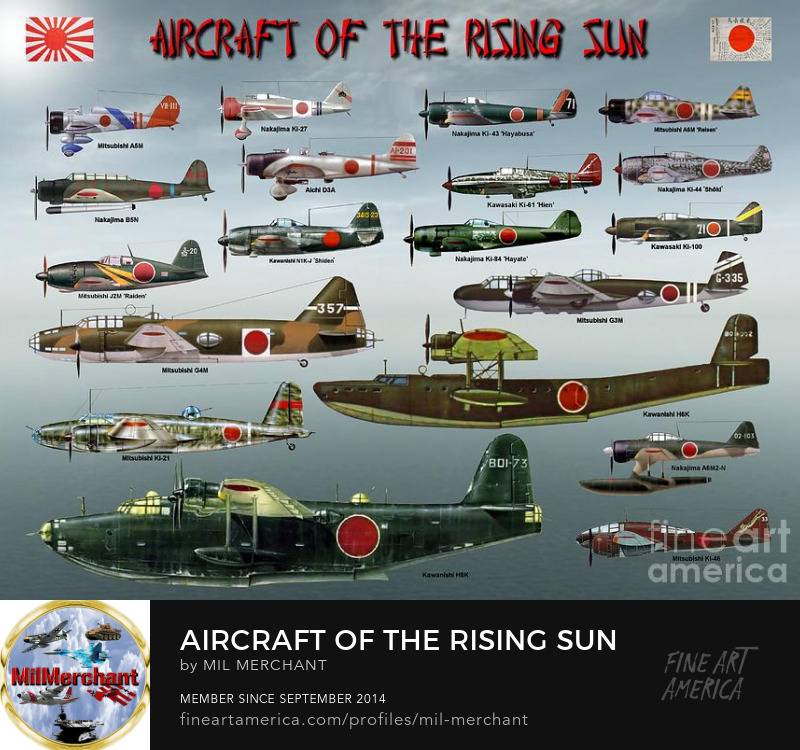The Yokosuka D4Y 'Suisei' (Eng: Comet) Navy Carrier Dive bomber was operated by the Imperial Japanese Navy. Its Allied reporting name was 'Judy'. The D4Y was one of the fastest dive-bombers of the war and only the delays in its development hindered its service while its predecessor, the slower fixed-gear Aichi D3A, remained in service much longer than intended. The speed and the range of the D4Y matched most long range requirements, however, like most Japanese aircraft, it lacked armour and self sealing tanks, resulting in heavy losses, but overall the type was used with success as a reconnaissance aircraft as well as for kamikaze missions.
Development
In early 1937, upon visiting Germany, representatives of the Imperial Navy of Japan bought a license to manufacture aircraft Heinkel He-118, the losing competitor for the role of a dive bomber(won by the Ju87 'Stuka') for the Luftwaffe as the Japanese were planning new type of dive bomber to replace the Aichi D3A. Together with the license acquired and several He118 V4 prototypes purchased, were taken to Japan, and renamed in 1938 to DXHel and subjected to the tests. When Aichi acquired manufacturing rights for the German DB 601A engine, the task was entrusted to the 1st Aviation Navy arsenal at Yokosuka with the design team led by Yamana Masao to begin work on a derivative of the German He 118V4 and completed a prototype by November 1940. The German aircraft was too heavy for carrier-based aircraft, in addition, during one of the flights, one had been destroyed in the air, so the plans of its serial production were terminated. The aircrafts smaller design (wingspan of only 11.5 m), but at the same time could take the same amount of fuel as the much larger D3A. In addition, D4Y1 had an internal bomb bay, which could take a bomb weighing 500 kg - a big step forward compared to He118. Another two 30-kg bombs could be hung under the wing. To reduce the speed in the dive plane was equipped with three controlled by electric brake flaps. Electrical control also had landing gear. Armament D4Y1 remained the same as in D3A1: two synchronized 7.7-mm machine gun Type 97 and one movable 7.92-mm machine gun type I. In the rear of the cabin as a power plant planned to use the 12-cylinder liquid-cooled engine Aichi Atsuta 12 hp power in 1175, which was a licensed version of the engine Daimler-Wentz DB 601A.
Back to Top
Early versions of the D4Y were difficult to keep operational because the Atsuta engines were unreliable in front-line service. From the beginning, some had argued that the D4Y should be powered by an air-cooled radial engine which Japanese engineers and maintenance crew had experience with, and trusted. The aircraft was re-engined with the reliable Mitsubishi MK8P Kinsei 62, a 14-cylinder two-row radial engine as the Yokosuka D4Y3 Model 33. Aircraft modification D4Y2 differs from its predecessors with more powerful engines Atsuta 32 (1400 hp) and increased with 1070 to 1660 liters of fuel tanks. In addition to the basic version made aircraft options D4Y2a Model 12A (on them instead of rolling 7.7-mm machine gun type 1 was installed 13-mm machine gun Type 2) and D4Y2-C Model 12 (deck scout). In addition, a number of aircraft and options D4Y2. The D4Y2a was equipped with devices to run with the catapult (they were designated D4Y2 KAI Model 22 and Model 22A D4Y2a KAI). Eventually the team had designed one of the best performing carrier single-engine bomber of the Second World War. The aircraft exceeded all expectations and was rushed into production in the spring of 1942. D4Y2 Model 12 - the second production series, produced from April 1944, not only in Eitoku (there until August 1944, where 326 aircraft were produced ), but also in the factory of the 11th Aviation arsenal Hiro.
Back to Top
At the same time, work began to prepare for mass production, which was planned to expand the plant of the company "Aichi" in Eitoku - Arsenal did not have the necessary production capacity. However, as production started, a major design flaw was discovered. During the execution of a test dive bombing it emerged the biggest drawback of the aircraft - a strong vibration of the wing in the dive(wing flutter), which could lead to the destruction of the main spar. Because of this, production by "Aichi" was suspended, and the developers are given the task to strengthen the structure of the wing. But because by this time the machine preproduction batch, which was planned to install engines Aichi Atsuta 12 1200 hp were practically built, it was decided to finish them in the form of deck scouts. They were equipped with cameras K-8 and received the official designation of "Deck the scout Type 2" Suisei "(Comet) Model 11" (D-1V1-C Model 11), on the plane which retained its guns, but the bomb racks were removed.
Back to Top
Night Fighter
At the factory in a small number of Hiro built there D4Y2 bombers were converted into night fighters D4Y2- S. In this case, all the bombers and aircraft carrier equipment is removed, and shooting forward and upward for the pilot seat instead of chairs arrow-radio operator at an angle of 30 degrees was mounted 20-mm cannon Type 99 Model 2: Through the use of a more powerful engine the maximum speed of the aircraft modification D4Y2 increased to 580 km/h, which is a good indicator of the bomber and night fighter. However, it was hampered by a slow climb rate.
Kamikaze Design
The last version was the D4Y4 Special Strike Bomber, a single-seat kamikaze aircraft, capable of carrying one 800 kg (1,760 lb) bomb, which was put into production in February 1945. It was equipped with three RATO boosters for terminal dive acceleration. This aircraft was an almost ideal kamikaze model: it had a combination of speed (560 km/h/350 mph), range (2,500 km/1,550 mi) and payload (800 kg/1,760 lb) probably not matched by any other Japanese aircraft.
Back to Top
Into Service
Lacking armor and self-sealing fuel tanks, the D4Y's did not fare well against Allied fighters. They did, however, cause considerable damage to ships, including the carrier USS Franklin which was nearly sunk by an assumed single D4Y and the light carrier USS Princeton which was sunk by a single D4Y. The D4Y, with the loss of the four main fleet carriers at Midway, which the D4Y was designed for, found difficulties being used on the smaller fleet carriers. The D4Y1-C reconnaissance aircraft entered service in mid-1942, when two of these aircraft were deployed aboard Soryu at the Battle of Midway, one of which was lost when Soryu was bombed. The other had been launched on a scouting mission and returned to Hiryu, it was then lost when Hiryu was bombed. During the Battle of the Marianas, the D4Ys were engaged by U.S. Navy fighters and shot down in large numbers. It was faster than the Grumman F4F 'Wildcat', but not the new Grumman F6F 'Hellcat' which entered combat in September 1943. The Japanese aircraft were adequate for 1943, but the rapid advances in American materiel in 1944 (among them, the introduction in large numbers of the Essex-class aircraft carrier) left the Japanese behind. Another disadvantage suffered by the Japanese was their inexperienced pilots. The U.S. Task Force 58 struck the Philippine airfields and destroyed the land air forces first, before engaging Japanese naval aircraft.
Back to Top
The Phillipines and the Marianas Battles
Flying from the surviving aircraft carriers of the IJNAS, the Chitose, Chiyoda, Hiyo, Junyo, Shinyo, Shokaku, Soryu, Taiyo, Unryu, Unyo and Zuikaku they were part of the Battle of the Phillipines Sea to which they were decimated. They also served with the following air groups:- 121st, 131st, 503rd, 601st, 634th, 653rd, 721st, Southwest Islands and Yokosuka Kokutais. D4Y2s were also used as bombers during the unsuccessful defence of the Philippines in October 1944, suffering severe losses. The final collapse of the Japanese Naval Air Arm was in the Battle of the Phillipine Sea, where combined with the new Nakajima B6N 'Tenzan', it was no match for the hordes of F6F 'Hellcat's, who had shot down nearly 400 IJN aircraft in one day alone and with such destruction of these newly reformed IJN Air groups, the battle was refered to as 'The Great Marianas Turkey Shoot', finally breaking the back of the Imperial Japanese Naval Air Service.
Back to Top
Kamikaze and Homeland Defence
It proved to be Japan's best carrier-based dive bomber, where it was responsible for damaging by bombing or kamikaze attacks, a number of US Carriers (USS Essex, Hancock, Intrepid and Cabot) which were hit by kamikazes. D4Ys from 761 Kokutai may have hit the escort carrier USS Kalinin Bay on 25 October 1944, and the next day, USS Suwannee. Both were badly damaged, especially Suwannee, with heavy casualties and many aircraft destroyed. The Carriers USS Enterprise and USS Yorktown were damaged by D4Ys of 701 Wing on 18 March. On 19 March, the carrier USS Franklin was hit with two bombs from a single D4Y, which then escaped despite heavy anti-aircraft fire. USS Franklin was so heavily damaged that she was retired until the end of the war. Another D4Y hit the carrier USS Wasp. On 12 April 1945, another D4Y, part of Kikusui mission N.2, struck USS Enterprise, causing some damage.
With all variants, a total of 2,038 copies were produced by wars end.
Back to Top
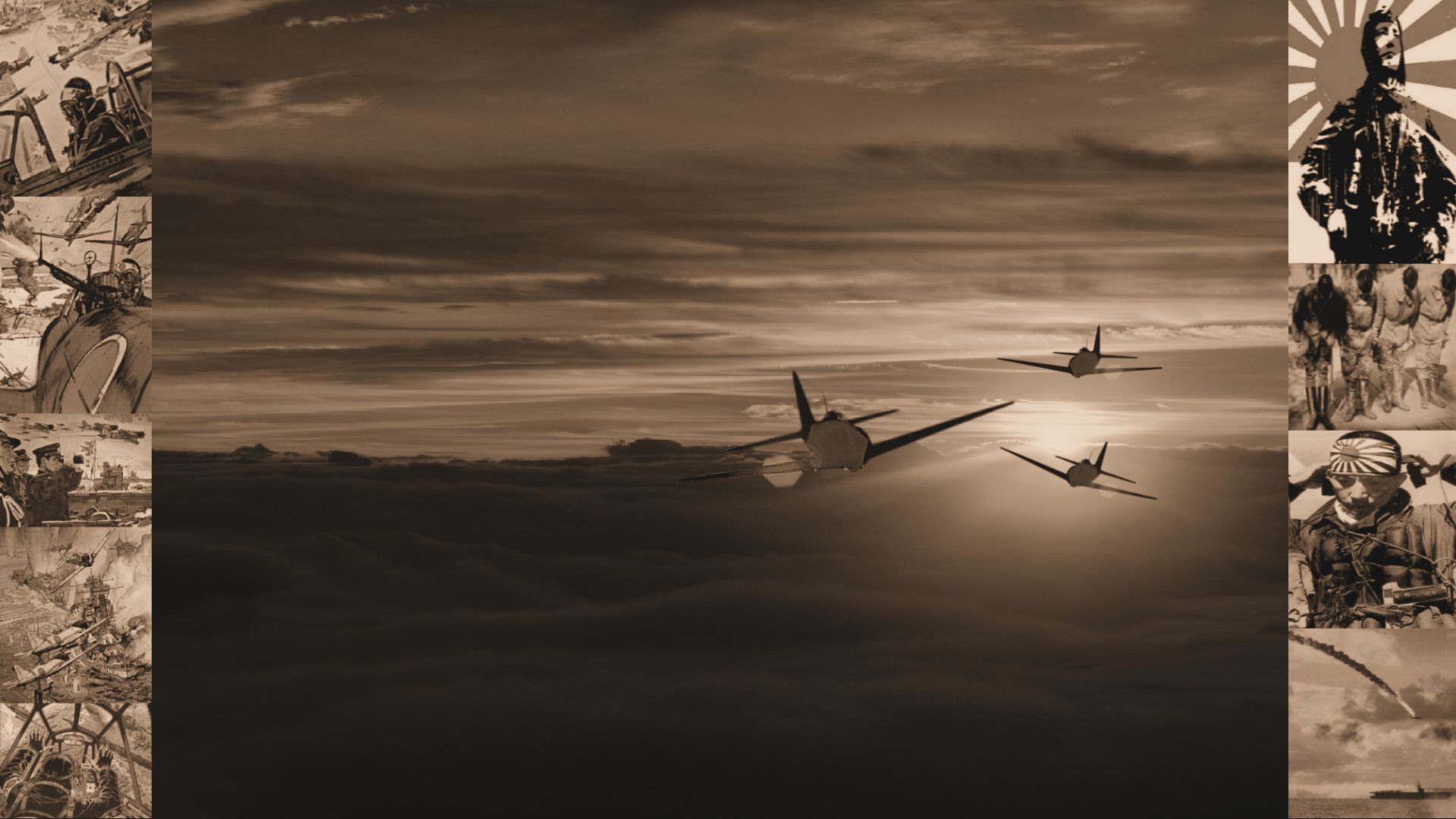

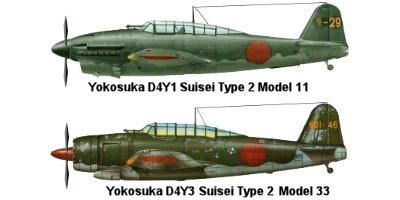

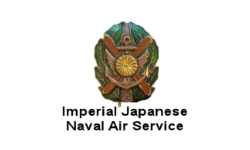
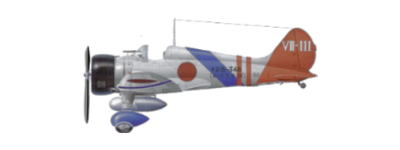 A5M
A5M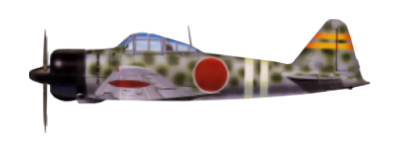 A6M Rei-sen
A6M Rei-sen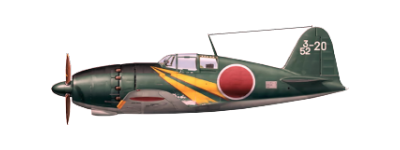 J2M Raiden
J2M Raiden N1K Shiden
N1K Shiden D3A
D3A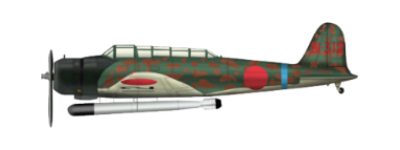 B5N
B5N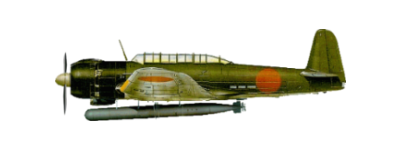 B6N Tenzan
B6N Tenzan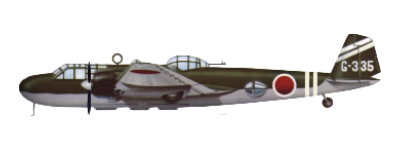 G3M
G3M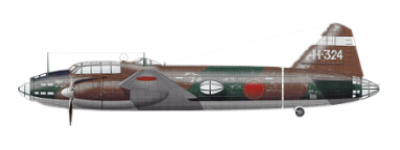 G4M
G4M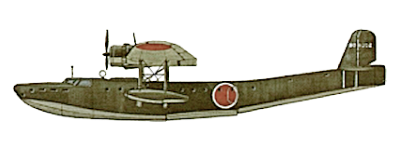 H6K
H6K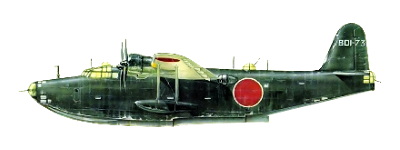 H8K
H8K
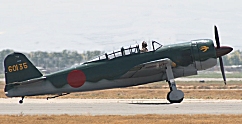

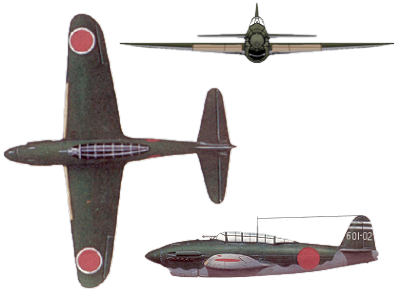
 Yokosuka D4Y 'Suisei'
Yokosuka D4Y 'Suisei'